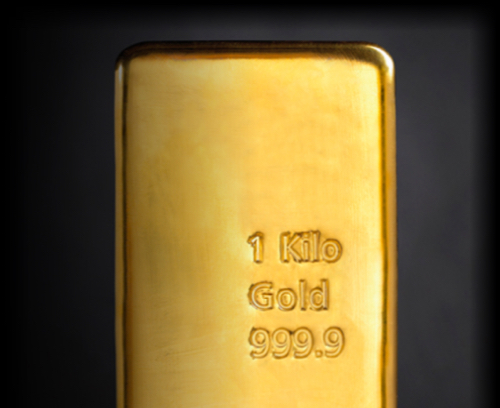It’s notoriously difficult to predict markets, so when analysts and experts from most of the major investment banks all predict rising prices, it’s good news for gold investors.
Gold has been on a tear since the start of the year, rising almost 20% in dollar terms in the last six months alone and repeatedly hitting new all-time highs. The snowball effect of interest rate decisions, recession fears, geopolitical tension and central banks stocking up on safe-haven assets have created a perfect storm of demand. And investment banks, often cautious in their forecasts, are finally admitting that the momentum looks set to continue.
Gold price forecasts- who’s saying what?
Goldman Sachs, the second-largest investment bank in the world, said last week gold will continue to climb into early next year, hitting new record highs on the way. “Goldman Sachs Research forecasts the price will reach $2,700 by early next year, buoyed by interest rate cuts by the Federal Reserve and gold purchases by emerging market central banks.” And there could be even more fuel to the rise if the US imposes trade sanctions, reigniting inflation, or if concerns about the US debt load get worse.
Bank of America goes even further, confirming their forecast that gold prices could rise to $3,000 per ounce by 2025, although this is dependent on interest rates coming down and central banks stocking their coffers.
The positive sentiment is echoed across the investment spectrum. Independent precious metals authority the London Bullion Market Association (LMBA), said in July their brief review of 14 professional analysts found that all of them expect the gold price to continue to rise. The LBMA publishes a gold price forecast at the start of every year, and the mid-year review cements the positive consensus reported in February.
Meanwhile JP Morgan, the world’s largest investment bank, in July asked the question ‘Will gold hit another all-time high’ while pointing out all the bullish gold drivers. The answer was a resounding yes as gold has repeatedly broken records on its journey towards $2,600 per ounce.
The bank said: “Many of the structural bullish drivers of a real asset like gold – including U.S. fiscal deficit concerns, central bank reserve diversification into gold, inflationary hedging and a fraying geopolitical landscape – have lifted prices to new all-time highs this year despite a stronger U.S. dollar and higher U.S. yields, will likely remain in place regardless of the U.S. election outcome this autumn
Citi commodities analysts were very bullish about gold in May, predicting the yellow metal could hit $3,000 in the forthcoming 12 months, at a time when gold was around $2,350 per ounce. It has already added around $200 since then, lending credence to the forecast.
The Morgan Stanley forecast from July predicts gold to rise over $2,600 in the fourth quarter, and the precious metals has previously been just $10 shy of that ceiling.
Why is the gold price rising?
Gold’s initial rally in March was spurred by the expectation that the US Federal Reserve would cut rates up to three times this year. Interest rates, pumped up to curb inflation in 2022, have done their job, and central banks are bringing them down in part to avoid a ‘hard landing’ or recession.
High rates should theoretically be bad for the gold price because gold doesn’t pay interest, so investors are missing out on significant interest income from bonds or savings accounts (called the opportunity cost of holding gold). Low rates are ‘good’ for gold because this opportunity cost decreases.
Book a free consultation
We offer free 15 min, 30 min and 45 min consultations so you can ask as many questions as you like without feeling rushed.
Our expert brokers love to chat about all things Gold and Silver.

But even while rates have been high, gold has maintained or increased in value because there are many other factors that affect the gold price, at the time including inflation (gold is seen as an inflation hedge) and geopolitical tension (Ukraine, Middle East).
So, gold started rising in March in anticipation of lower rates in the US, but still carried on rising even when the rate cutes kept being pushed further out. Anticipation helped, but investors also bought gold to protect their assets in case the economy went into recession, and because geopolitical tensions kept rising so they turned to safe-haven assets.
Now gold prices are expected to rise as the rate cuts finally start to kick in. The Fed cut rates by 0.5% on Wednesday (18th September,) the first cut in four years. This will reduce the opportunity cost of holding gold and make it a more attractive investment.
In early October 2024, Gold pushed towards the £2,000 an ounce barrier, reinforcing predictions of continued price growth amidst global economic uncertainty. This milestone highlights the ongoing demand for gold as a safe-haven asset, particularly as inflation, geopolitical tensions, and currency instability persist. Financial experts suggest this price surge could mark the beginning of an upward trend, with gold poised to offer even greater protection against market volatility in the coming months.
The other factors expected to affect gold’s inexorable rise are geopolitical tensions, with the Middle East conflict simmering and flaring repeatedly over the last six months, political uncertainty around the US elections, economic uncertainty over the health and strength of global economies, and a resurgence in central banks buying gold as they too try to protect their reserves from the many potential crises on the horizon.
Almost everyone now seems to be facing the same direction, so this could be a good time to walk this way.
